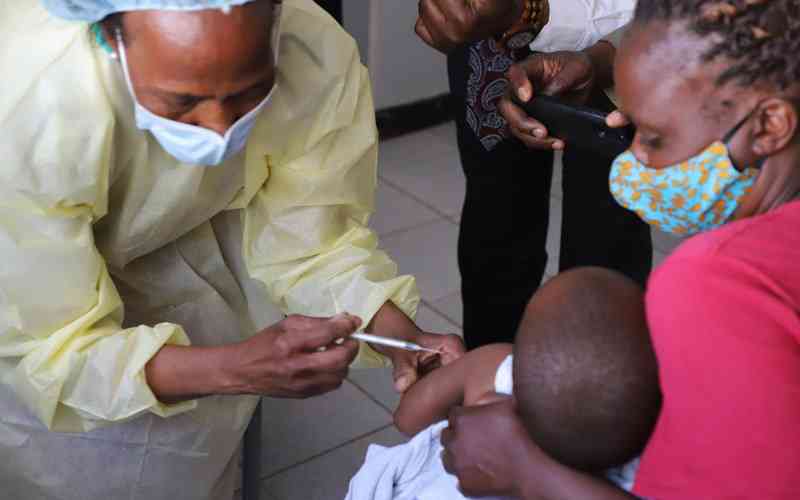
guest column Tororiro Isaac Chaza
DRIVING in Harare and on the highways of Zimbabwe has become distressful. Recent reports of high-profile road traffic deaths refer. The traffic chaos has become a ‘shrew’.
There is an urgent need to ‘tame the shrew’, to borrow from Shakespeare’s prose. Why do I call our traffic a ‘shrew’? According to www.vocabulary.com, a ‘shrew’ is described with a warning: “Use the noun shrew — at your own risk — to refer to a woman who is argumentative, nagging, and ill-tempered.”
That is an apt depiction of the traffic madness in our streets and highways, albeit caused mainly by heedless male drivers. I am greatly flummoxed as to why Shakespeare would use ‘shrew’ to portray a woman of ill-temper. He would have to explain himself. I am absolved. The effect of the traffic ‘shrew’ is alarming road-death statistics reported thus:
“Sadly, we continue to lose lives and limbs on our roads due to some preventable drivers’ conducts. Last year, 2018, we recorded an increase in road traffic collisions from 42 950 in 2017 to 52 052 in 2018. Road traffic deaths also increased from 1 828 in 2017 to 1 986 in 2018. The number of people injured went up from 10 584 to 11 924,” said Transport minister Joel Biggie Matiza in February this year.
Curiously, I googled to get comparative statistics and came across a World Health Organisation (WHO) Global Status Report on road safety in 2018 on www.who.int, which puts Zimbabwe’s reported road traffic deaths at 1 721 for 2016.
However, WHO computes its own figures using some statistical modelling technique and puts the Zimbabwean road deaths figure at 5 601.
The country’s reported figure and the WHO computed figure show a discrepancy of 320%. Since this is not a professional research paper, allow me in this discourse to take the country’s reported figure as the approximation of truth. To use the WHO figure would require me to do a more laborious study in a field in which I am not an expert.
- Chamisa under fire over US$120K donation
- Mavhunga puts DeMbare into Chibuku quarterfinals
- Pension funds bet on Cabora Bassa oilfields
- Councils defy govt fire tender directive
Keep Reading
However, my curiosity remains insatiate as the same report gives only a 12% discrepancy in the reported and modelled figures for, say, the United Kingdom.
I conjured up this article on the need, and how to ‘tame the shrew’ when I was stuck in a petrol queue. I discovered a copy of the Zimbabwe Republic Police (ZRP) Client Service Charter in the glove compartment of my vehicle. I believe it was handed to me a year or so ago by the police during a public relations exercise.
My distress turned to de-stress as I thoroughly enjoyed reading it. It is a well-articulated document.
The vision states “to be the leading police service provider in the world by 2020″. Yes, that is right, 2020 AD, next year that is.
The mission statement follows: “To maintain law and order, protect and secure the lives and property of the people and to institute dynamic policing practices and engender effective prevention, investigation and detection of crime.” It is a good read, indeed. My ‘contriving’ mind got revved up.
I reckon for ZRP (soon to be Zimbabwe Police Service – ZPS), to be ‘leading’ they have to aim to be in the top ten.
According to www.wonderlist.com and other websites, the top ten police forces that ZRP would have to contend with for the leading position are UK’s Scotland Yard, Canada’s Royal Canadian Mounted Police, Dutch Police, National Police of France, Japan’s National Police Agency, United States’ Los Angeles Police Department, Australian Federal Police, Germany’s Bundespolizei, Chinese People’s Armed Police Force and Italy’s Carabinieri.
As a good citizen and a good client of the police service, mine is not to fashion an opinion, positive or negative, but to raise the question: “How can I help the ZRP achieve this vision of being the leading police service provider by 2020?”
I believe I have a role to play to complement ZRP’s effort to be the best. Twenty-twenty might need be revised a bit. You can download a copy of the ZRP Client Service Charter from www.zrp.gov.zw. The document was uploaded as far back as September 2015.
Under the ‘operations’ performance pillar, the ZRP Client Service Charter lists a number of core functions.
The one that I believe we all can assist in achieving is the one on traffic.
It states: “Fostering an efficient and effective traffic management system to curb road carnage”, hence my use of the term ‘taming the shrew’.
Furthermore, the document states under the minimum standards of performance the objective of curbing traffic accidents as: “To limit the rate of growth of traffic accidents to 5%, basing on the previous year’s figures.”
Personally, I would have liked to see a reduction in the quantum of accidents rather than a limit to the rate of the growth of accidents. But I suppose it is more realistic, considering the current chaos exacerbated by the increase in vehicles and drivers’ licenses.
In order to understand the objective, one has to note that the rate of accidents would normally be much more than 5%. Matiza’s statement earlier on shows an increase of 21% in road traffic collisions and 9% in road deaths in 2018.
Therefore, even a reduction in the growth rate of traffic accidents from 21% to 5% would be a mammoth task. Compare with say, the UK, where during the same period, “there were 1 770 reported road fatalities, a 3% increase from 1 718 the previous year.” https://assets.publishing.service.gov.uk.
Please, observe that there were 1986 road traffic deaths in Zimbabwe, with a population of 17 million, as compared to Britain’s 1 770 road traffic deaths with a population of 66 million, over the same period.
This computes to about 11,7 deaths per 100 000 for Zimbabwe (WHO puts the figure at 34,7) and about 2,7 deaths per 100 000 for Britain (WHO at 3,1).
Of course, one can throw in the GDP/Capita statistics to show a high inverse correlation between economic performance and road deaths, as high-income countries generally have lower accidents and resultant deaths than lower-income countries, a glaring point observed in the WHO road safety report.











